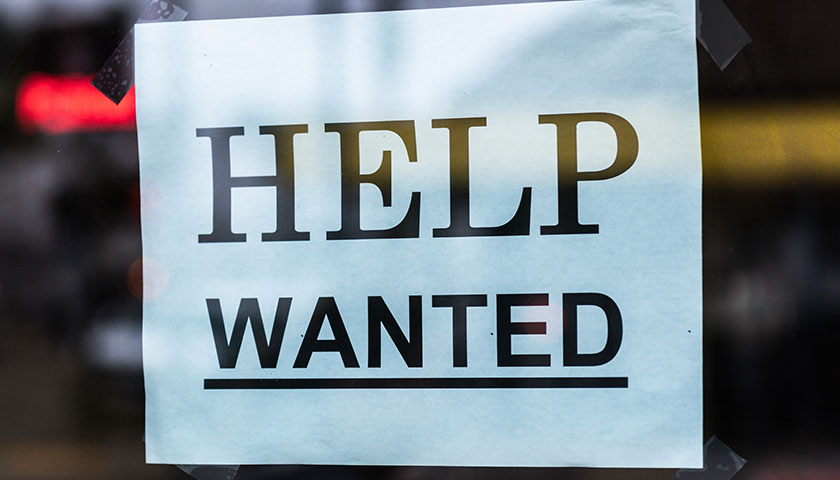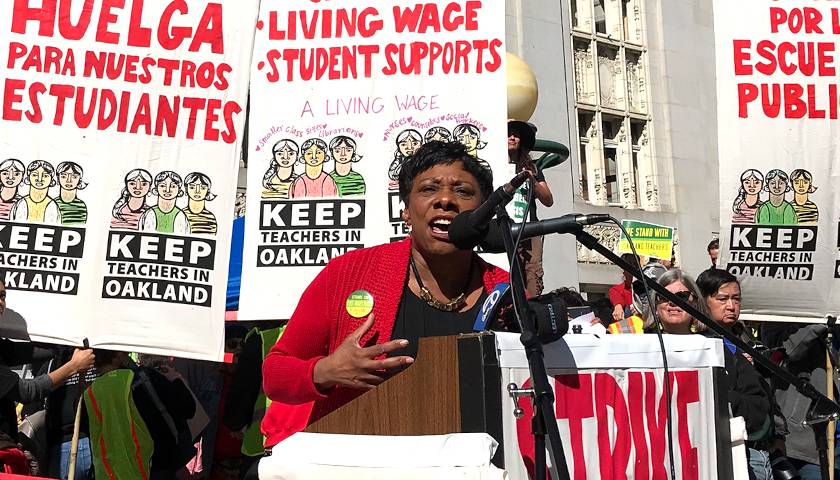by Casey Harper
The latest federal jobs report shows a dip in new unemployment claims, but those figures still remain higher than pre-pandemic levels.
The Department of Labor reported Thursday that 348,000 Americans filed for first-time unemployment benefits last week, a decrease of 29,000 from the previous week. That number is the lowest since March 2020.
The ongoing unemployment claims have dropped significantly since the heart of the pandemic, but those too are higher than before the pandemic began.
“The total number of continued weeks claimed for benefits in all programs for the week ending July 31 was 11,743,515, a decrease of 311,787 from the previous week,” DOL said. “There were 28,676,558 weekly claims filed for benefits in all programs in the comparable week in 2020.”
The drop in unemployment continues a trend in recent weeks, giving hope to economists and lawmakers that steady growth can be expected going forward.
After the July jobs report was released earlier this month, both Biden and Republicans took credit for the economy, which added nearly 1 million jobs in July.
“The unemployment rate declined by 0.5 percentage point to 5.4 percent in July, and the number of unemployed persons fell by 782,000 to 8.7 million,” the Bureau of Labor Statistics said. “These measures are down considerably from their highs at the end of the February-April 2020 recession. ”
President Joe Biden has hailed the continued improvement as a sign his administration is making the right moves for economic growth.
“We’ve made historic economic progress and created more jobs than any administration has done in the first six months of being in office,” Biden said after the July report. “Now, we have a chance to turn this great movement into an economy that works for all Americans – not just the wealthy.”
Republicans, though, have pointed to their unemployment policies as the cause for the drop. Earlier this year, experts noticed that unemployment remained high despite widespread job availability.
That trend came after Congress extended federal supplemental unemployment benefits of $300 weekly, essentially doubling unemployment benefits depending on state unemployment benefits.
Republicans argued the addition of those benefits was keeping Americans from returning to work. A Morning Consult survey from earlier this year found that 1.8 million unemployed Americans had turned down jobs because they did not want to lose government benefits.
More than two dozen Republican governors formally rejected the $300 weekly federal payments over the summer. Now that unemployment is improving, they say their plan is working.
“Thanks in part to Republican governors removing the Biden work barrier that pays the jobless more to stay home than to work, the July jobs report finally met expectations – although the President’s jobs deficit still remains high at 298,000 and Main Street businesses are still struggling to find workers,” U.S. Rep. Kevin Brady, R-Texas, said after the July jobs report. “The labor force participation rate still hasn’t improved in 2021, which is a red flag for tepid growth ahead. And while we will get the full data in mid-August, it appears rising prices will continue to beat wage growth for a seventh consecutive month, meaning inflation under President Biden will continue to shrink the purchasing power of families.”
– – –
Casey Harper is a Senior Reporter for the Washington, D.C. Bureau for The Center Square. He previously worked for The Daily Caller, The Hill, and Sinclair Broadcast Group. A graduate of Hillsdale College, Casey’s work has also appeared in Fox News, Fox Business, and USA Today.




